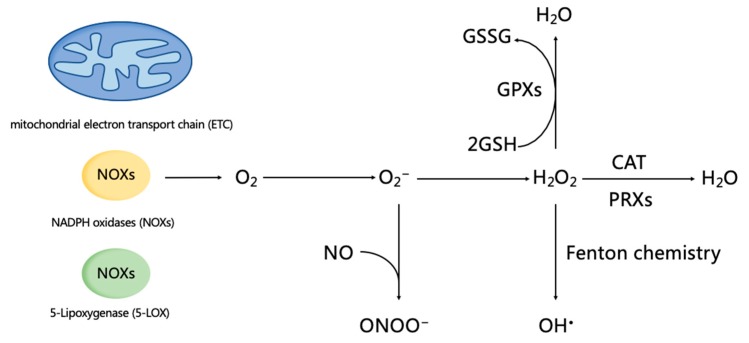Figure 1.
Reactive oxygen species (ROS) generation and homeostasis. The endogenous generation of ROS is primarily derived from the mitochondrial electron transport chain (ETC), including a family of membrane-bound NADPH oxidases (NOXs) and 5-Lipoxygenase (5-LOX). As a precursor of H2O2 and OH•, O2−can be converted into H2O2 by three isoforms of superoxide dismutases (SOD) (i.e., SOD1, 2, and 3) that locate in the cytoplasm, mitochondria matrix, and extracellular matrix. O2− reacts with nitric oxide (NO), and produces peroxynitrite (ONOO−), which will decrease antioxidant capacity. OH• is the production of H2O2 undergoing Fenton chemistry, and it owns the strongest chemistry activity, which can cause damage to biomolecules (such as DNA damage, lipid peroxidation, and protein denaturation). In addition, H2O2 can be catalyzed to H2O by peroxiredoxins (PRXs), glutathione peroxidases (GPXs), and catalase (CAT). Glutathione (GSH) is the main non-enzymatic antioxidant in cells, and plays an important role in the degradation of H2O2. Two molecules of GSH are oxidized by H2O2 through GPX, and are converted into glutathione disulfide (GSSG), and then are regenerated GSH via glutathione reductase (GR) and NADPH.

